I’m a reader. I’m a gardener. I work at keeping my carbon footprint as small as possible. My BFF Becky knows me really well, and a few years ago recommended the perfect book: Animal, Vegetable, Miracle by Barbara Kingsolver. It’s a memoir of the year she and her family lived as locovores–written in Kingsolver’s characteristic style with all sorts of compelling essays on the whys of eating locally. I keep this book with my cookbooks in the kitchen, so the recipe for this pasta sauce is at the ready when I need it.
How satisfying to have some of your summer saved in beautiful jars! How spectacular to have the flavor of summer on your pasta on a cold, grey winter’s day!
This is quite a project–totally do-able–but time consuming. Set aside a day, make yourself as much working space as possible, and gather up a rather imposing (But really do-able! Really!) bunch of ingredients. I’ll give the amounts of each from the book; you may need to adjust amounts according to how much tomato puree you end up with–more on that later! The best plan is to wait until you have LOTS of tomatoes and make a bunch of sauce all at once. I freeze tomatoes while I accumulate them.
NOTE: You MUST stick closely to the recipe if you’re canning for proper pH. If you’re freezing the sauce, feel free to add fresh veggies.
This recipe will make 6-8 qts–any combination of quart or pint jars or freezer boxes.
- 10 qts tomato puree ( I use all sorts of tomatoes. Paste tomatoes, like romas, thicken the sauce faster.)
- 4 large onions, peeled and chopped
- 1 cup dried basil
- 1/2 cup honey
- 4 TBSP dried oregano
- 3 TBSP salt
- 2 TBSP ground, dried lemon peel
- 2 TBSP thyme
- 2 TBSP garlic powder (or more, to taste)
- 2 TBSP dried parsley
- 2 tsp pepper
- 2 tsp cinnamon
- 1/2 tsp nutmeg
Start with blanching the tomatoes to make them easier to peel. Cook briefly in boiling water–just until peels start to loosen, about 1-2 minutes. I use a blancher–a double pot with a strainer that lifts out.
As soon as peels show evidence of cracks/loosening, dump them into an ice bath to stop the cooking. I fill my (very clean) sink with cold water and ice.
Peel and chunk the tomatoes.
I set up my processor next to the sink, with a bowl to place the chunked tomatoes in and a measuring bowl to measure the puree. An apron is recommended–tomatoes squirt and splash as you peel them and pour the puree from the processor to the measuring bowl to the cooking pot.
Place chunked tomatoes in the processor and puree to a fairly consistant smoothness, but not liquified. Pour puree into the measuring bowl, keep track of how much puree you have as you go along, pouring into a large stainless steel or enamel stock pot.
When all tomatoes are pureed, figure your total amount of puree and adjust the rest of the ingredients in the recipe accordingly. For example, if you end up with 5 quarts of puree, cut all amounts in half.
Peel and chop the onions and sweat/soften them in a pan over medium heat, stirring occasionally. Add a small amount of water if needed, but NO OIL if you are canning!
While onions are softening, measure out the rest of the ingredients and add to the puree.
Add onions to the mix when they are soft.
Bring to a boil and simmer on low heat for two to three hours until sauce has thickened to your liking. (Your kitchen will smell amazing!) Stir frequently, especially toward the end, to avoid burning. Meanwhile, heat water in a canner, wash jars and rings or sterlize in a dishwasher. Rinse jars and rings well and hold in hot water. Boil lids and hold at a simmer.
Fill jars, leaving 1/2 inch headspace.
IMPORTANT–NOT OPTIONAL: Add 2 tablespoons lemon juice OR 1/2 tsp citric acid (Fruit Fresh) to EACH quart jar. (Half as much per pint.) This ensures that the sauce will be safely acidic.
Wipe rims, place lids and adjust rings.
When all jars are filled, lower them into the boiling water of a canner. Most canners hold up to 7 jars at a time.
Process (boil) quarts for 35 minutes, pints for 25 minutes with the lid on the canner. Start the time when the water starts to boil again after placing jars.
Carefully remove jars with a jar lifter and let cool. Listen for the metallic “thunk” indicating the jars are sealing. The lids will be concave when sealed. Label with whatever you decide to call your sauce, along with the date you canned it. (The sauce will keep for a year in normal house temperatures–not that it will last that long!) Have fun! Be creative! BFF Becky calls hers “Romalicious.” 🙂
There ya go! You just made the yummiest pasta sauce ever! Use it on pasta (duh!), or as a pizza sauce, a sauce to jazz up a meat loaf, a sandwich spread, or most any time a recipe calls for tomatoes! Mmmm! Yummy!


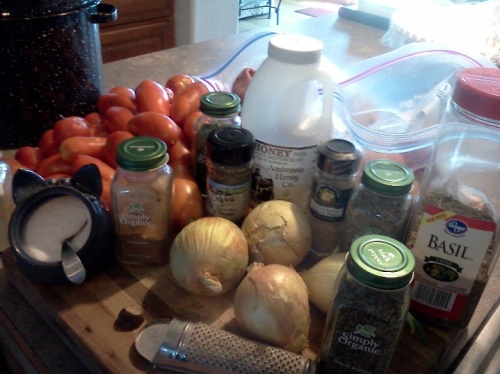

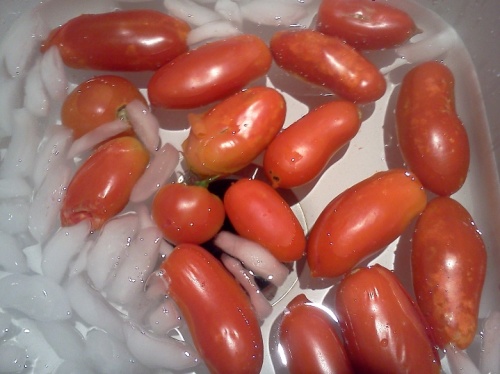
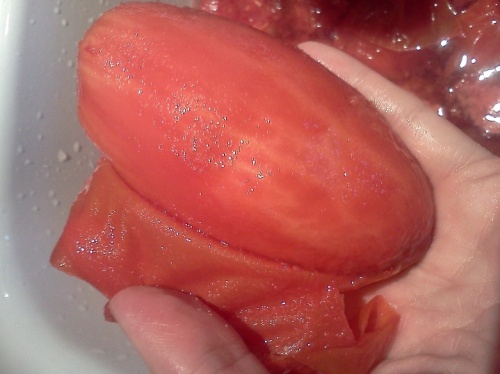


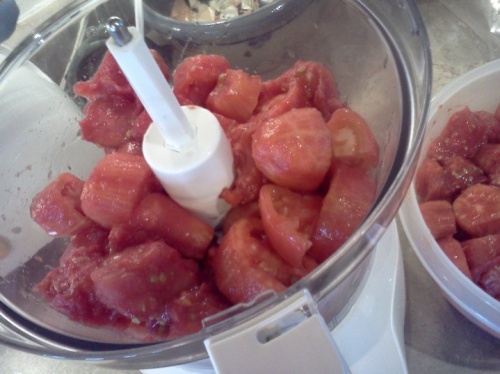
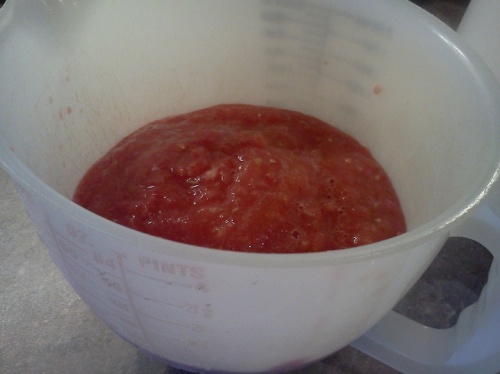



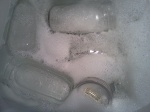
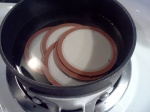


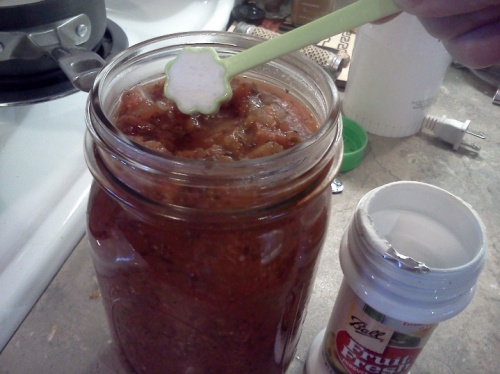

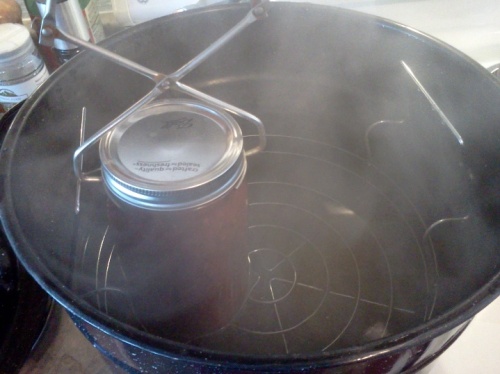
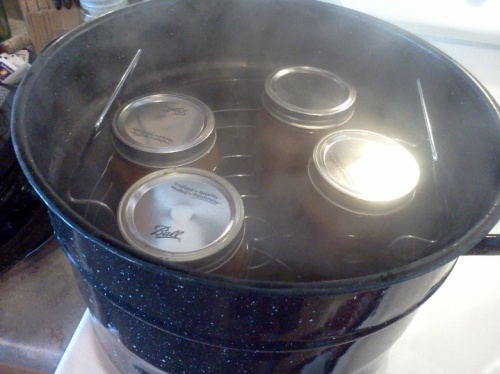



![Animal Vegetable Miracle IMG00809[1]](https://somethinyummy.files.wordpress.com/2011/02/animal-vegetable-miracle-img008091.jpg?w=300&h=225)



